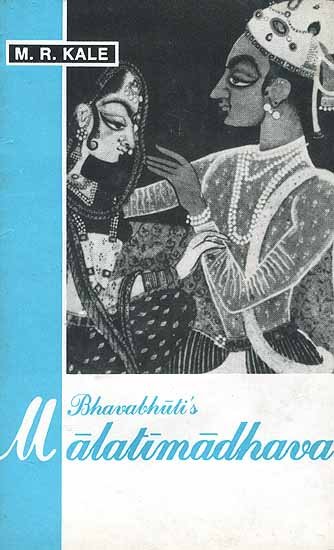Malatimadhava (study)
by Jintu Moni Dutta | 2017 | 52,468 words | ISBN-10: 8120813057 | ISBN-13: 9788120813052
This page relates ‘Bibhatsa Rasa (The Odious Sentiment):’ from the English study on the Malatimadhava of Bhavabhuti:—A Prakarana type of Drama in ten acts revolving around the love-story of Malati (from Padmāvatī) and Madhava (from Vidarbha). This study discusses the history of its author and the literary, social, religious, historical and cultural aspects of the Malatimadhava.
Part 1.3f - Bībhatsa Rasa (The Odious Sentiment):
The sthāyibhāva or permanent mood of this rasa is jugupsā or disgust. It is created by vibhāvas like hearing of unpleasant, offensive, impure and harmful things or seeing them or discussing about them. It is to be represented on the stage by anubhāvas such as stopping the movement of all the limbs, narrowing down the mouth,vomiting, spitting, shaking the limbs in disgust and the like. The vyabhicāribhāvas of this are epilepsy, delusion, agitation, fainting, sickness, death and the like.[1]
In the Mālatīmādhava, Bhavabhūti has successfully delineated Bībhatsa rasa. The verse utkṛtyautkṛtya kṛttim prathamamatha…………….. etc[2] is an utterance of Mādhava noticing the behaviour of a devil in a cremation ground. This is the description of a half starved devil being frightened over the coming of other devils who might share his food. Here, repetition of words suggests the continuity of undertaking task. First of all the devil is engaged in tearing off the skin again and again, and after taking the swollen flesh he gradually eats the raw flesh from the joints of the bones. The devil places the dead body on his lap, being afraid of other strong devils that might snatch it away from him. Anxiousness and fear make his eyes wide open and all his teeth out. Here, the dead body is the ālambanavibhāva i.e. the main exciting cause, tearing off the skin etc is the uddīpanavibhāva, the striking of nose etc is the anubhāva and anxiousness etc is the vyabhicāribhāva. Thus, this description gives rise to disgust which leads to the Bībhatsa rasa.
In the same manner, the verse niṣṭāpasvidyadasthanah kvathanaparinamanmesaḥ...................[3] .etc displays another disgusting portrait of the ghosts as well as the drinking orgies of the ghosts which give the real relish of Bībhatsa rasa. Bhavabhūti not only depicts the various actions of male ghosts but also he depicts actions of female ghosts. The female ghosts ladies have not lagged themselves behind the males in enjoying. [4] Thus, Bhavabhuti cleverly delineates the Bībhatsa rasa which creates disgust in the reader’s mind. However, from this discussion it appears that Bhavabhūti is a poet with great talent who can skillfully delineate the Bībhatsa rasa also.
Footnotes and references:
[1]:
athabībhatsonāma jugupsāsthāyibhāvātmakaḥsacāhṛdyāpriyācoṣyāniṣṭaśravaṇa darśan kīrtanādibhirvibhāvairutpadyate/tasyasarvāṅgasaṃhāramukhavikūṇan ollekhananiṣṭhī vanodvejanādibhiranubhāvairabhinayaḥprayoktavyaḥbh āvāścasyāpasmārodvegavegamohavyādhimar aṇādayah /
/
Nāṭyaśāstra,VI.p.328
[2]:
utkṛtyaotkṛtya kṛttim pṛathamamatha pṛthūchophabhūyāṃsi māṃsā /
nyaṃsasphikprṛṣṭthapiṇḍādyavayavasulabhānyugrapūrtīni jagdhvā //
āttasnāyvantranetraḥ prakaṭitadaśanaḥ pretaraṅkaḥkaraṅkā /
daṅkasthādasthisaṃsthaṃsthapuṭagatamapi kravyamavyagramatti //
Mālatīmādhava,V.16
[3]:
niṣtāpasvidyasthanaḥ kvathanaparinamanmedasaḥ pretakāyām /
kṛṣṭvā samsaktadhūmānamapi kuṇapabhujo bhūyasībhyaścitābhyaḥ //
utpakvastramasimāṃsaṃ pracaladubhayataḥ samdhinirmuktamārād /
ete niṣkuṣya jaṅghānalakamudayinīrmajjadhārāh pivanti //
Ibid.,V.17
